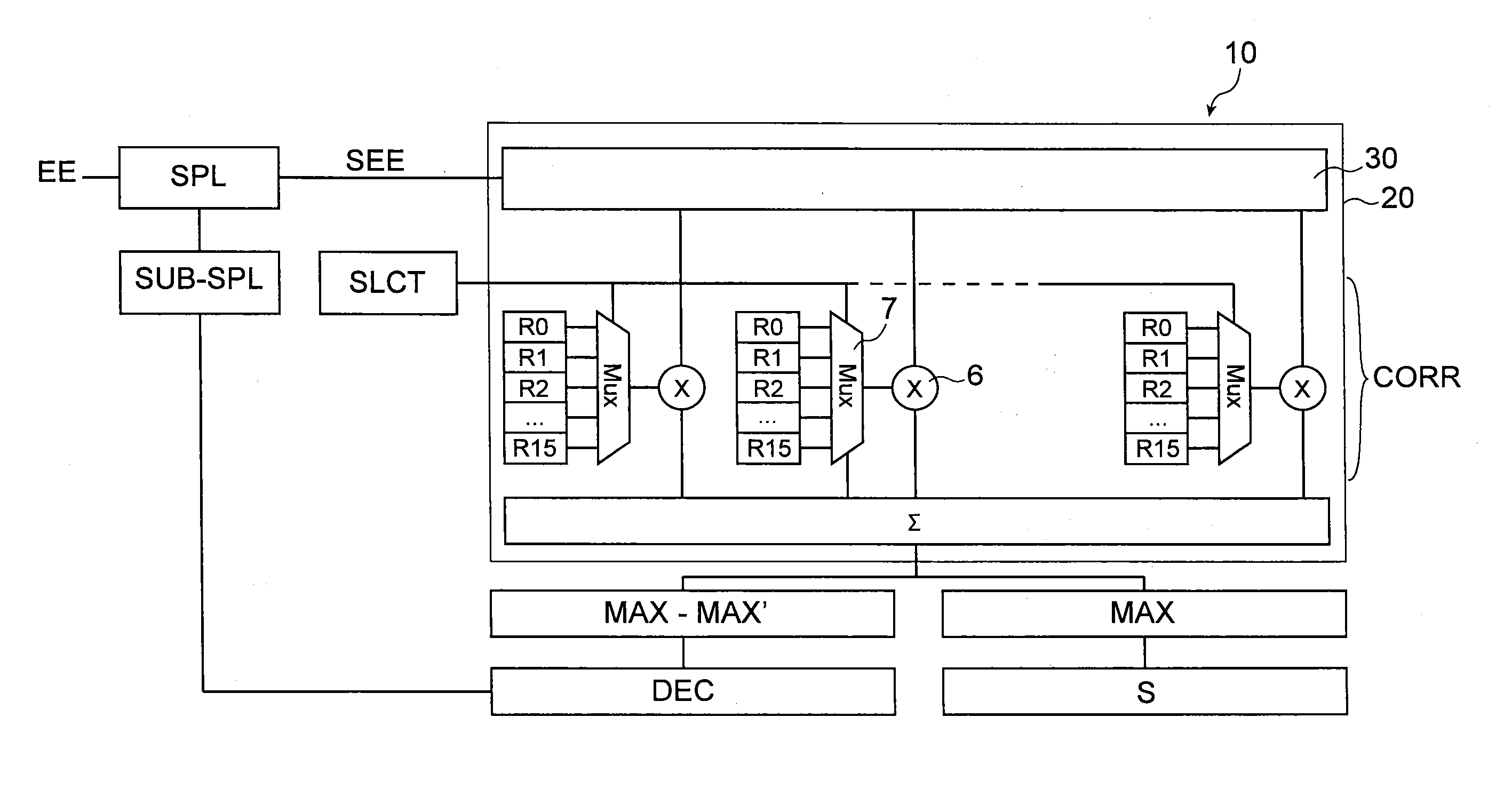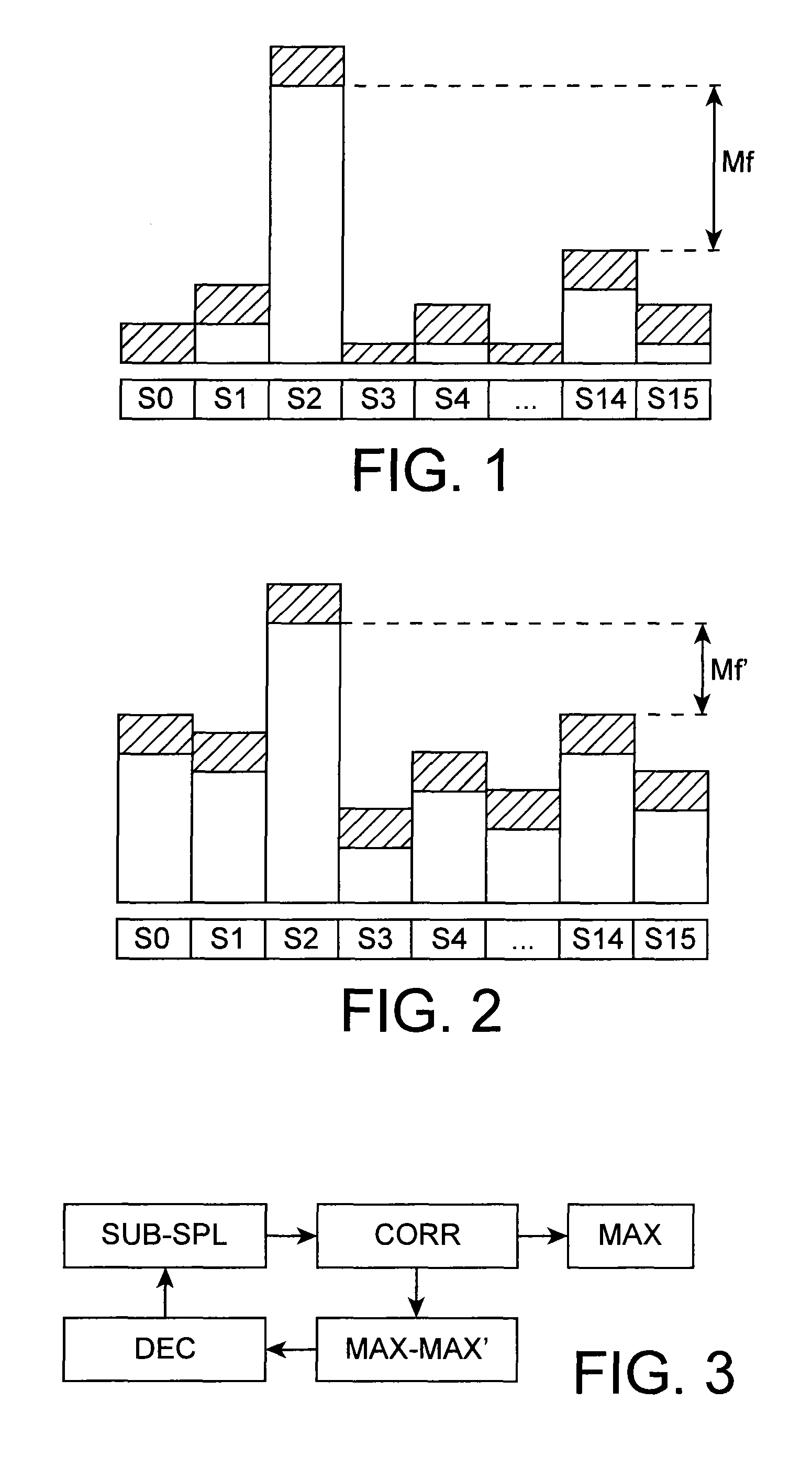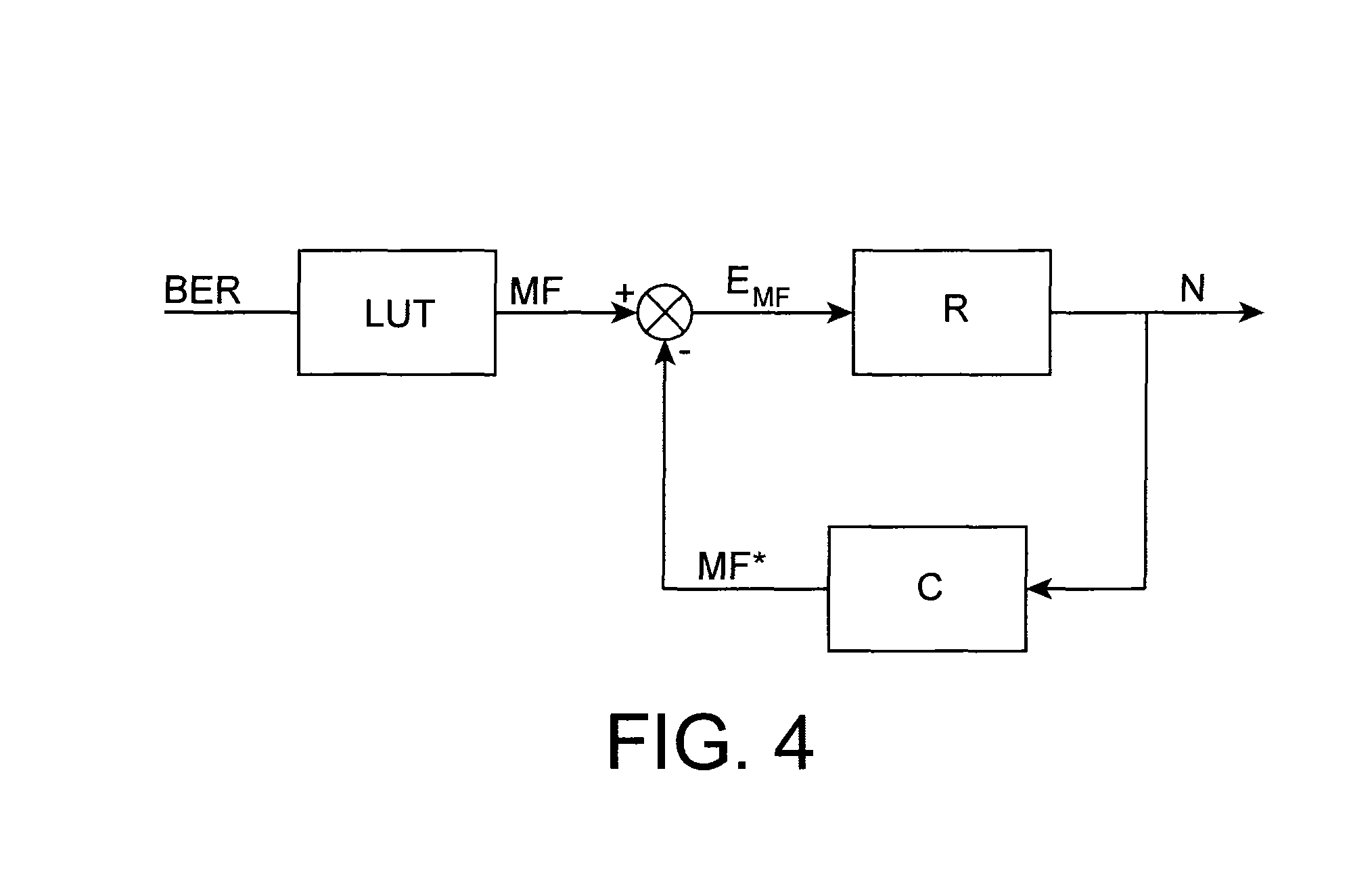Method for self-adaptively demodulating quasi-orthogonal signals, demodulation unit and radio signal receiver
a quasi-orthogonal signal and demodulation unit technology, applied in the field of radio communication, can solve problems such as rare situations, problems that cannot be observed, and the operation of the receiver is not optimal most, and achieve the effect of reducing calculations and thus consumption
- Summary
- Abstract
- Description
- Claims
- Application Information
AI Technical Summary
Benefits of technology
Problems solved by technology
Method used
Image
Examples
Embodiment Construction
[0032]The invention relates to a method for decoding a data symbol carried by a signal received by a receiver of a communication system. The invention also extends to a demodulation unit of a receiver for a communication system configured to enable this decoding method to be implemented.
[0033]Within the scope of the invention, the data symbol received by the receiver is modulated by a spread code sequence selected from a plurality of spread code sequences being quasi-orthogonal to each other to differentiate the symbol from other data symbols. It is received in the form of a set of modulation bits.
[0034]The invention is applicable in particular, but non-exclusively, to a direct sequence spread spectrum (DSSS), meeting IEE 802.15.4™-2011 standard. In particular, the invention is not limited to the O-QPSK modulation recommended by this standard, its principle remaining valid whatever the transmission type provided that an orthogonality between the spreading sequences enables them to b...
PUM
 Login to View More
Login to View More Abstract
Description
Claims
Application Information
 Login to View More
Login to View More - R&D
- Intellectual Property
- Life Sciences
- Materials
- Tech Scout
- Unparalleled Data Quality
- Higher Quality Content
- 60% Fewer Hallucinations
Browse by: Latest US Patents, China's latest patents, Technical Efficacy Thesaurus, Application Domain, Technology Topic, Popular Technical Reports.
© 2025 PatSnap. All rights reserved.Legal|Privacy policy|Modern Slavery Act Transparency Statement|Sitemap|About US| Contact US: help@patsnap.com



